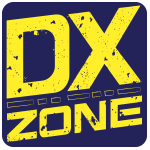JOTA-JOTI is the largest Scouting event in the world with over 1.3 million Scouts participating across 150+ countries. Scouts and Guides across the world connect with each other during JOTA-JOTI using the airwaves and the internet.
JOTA is a spectacular opportunity to introduce Scouts to amateur radio. For many, this will be their first exposure to the world of ham radio. Some will go on to become hams, enjoying the hobby for a lifetime. A few will even find the basis of a career in science and technology.
The event has been held the third weekend of October since 1957.
The next Jota will be 17-19 October 2025

Why is there a JOTA-JOTI ?
Jamboree on the Air – Jamboree on the Internet (JOTA-JOTI) is a fun and exciting annual experience for all young people in Scouting using the widest range of technology communication channels to educate, promote cultural awareness, develop tolerance, as well as enhance sharing, collaboration and teamwork, along with building a sense of belonging to the worldwide Scout Movement. It is a “travel-free” Jamboree that takes place wherever you are in the world

JOTA Suggested Frequencies
- All frequencies are shown as megahertz.
- Primary HF recommendations are for General Class licensees. Technicians may take advantage of 10 m and VHF/UHF for voice communications.
- After contact is made on Calling Channel or frequency, move to another channel or frequency for QSO.
- Experiment with modes prior to JOTA or Radio Scouting demo. ‘Murphy’s Law’ prevails!
- Use web search tools to find lots of helpful information about any of the modes commonly used for JOTA and Radio Scouting.
- WOSM (World Organization of the Scouting Movement) calling frequencies are shown to indicate center of international activity.
World Wide JOTA HF Frequencies
| Band | SSB (phone) | CW (Morse) |
| 80 m | 3.690 & 3.940 MHz | 3.570 MHz |
| 40 m | 7.090 & 7.190 MHz | 7.030 MHz |
| 20 m | 14.290 MHz | 14.060 MHz |
| 17 m | 18.140 MHz | 18.080 MHz |
| 15 m | 21.360 MHz | 21.140 MHz |
| 12 m | 24.960 MHz | 24.910 MHz |
| 10 m | 28.390 MHz | 28.180 MHz |
| 6 m | 50.160 MHz | 50.160 MHz |
European JOTA Frequencies
JOTA isa worldwide event, and JOTA staions in Euripe are looking for contacts. To avoid a conflcit with the Worked All Germany contenst, European JOTA stations will be active on these band segments:
| 80 m | CW 3.560-3.800 kHz | SSB 3.650-3.700 kHz |
| 40 m | CW 7.040-7.200 kHz | SSB 7.080-7.140 kHz |
| 20 m | CW 14.060-14.350 kHz | SSB 14.100-14.125 kHZ and 14.280-14.350 kHZ |
| 15 m | SSB 21.350-21.450 kHz | |
| 10 m | SSB 28.225-28.400 kHz |
2 Meter FM Simplex
147.450, 147.480, 147.510, 147.540* * Use 147.540 as Calling Channel. Always listen first to avoid interfering with another QSO or auxiliary or control link. Avoid 146.520, the National FM Simplex Calling Frequency, as well as 146.550, which is commonly used by mobiles and RVers.
70 CM FM Simplex
446.000*, 445.950, 446.050, 446.100, 446.150 * Use 446.000 as Calling Channel. Always listen first to avoid interfering with another QSO or auxiliary or control link.
D-STAR
REF033A has been allocated as a full-time JOTA/Radio Scouting D-STAR Reflector. After contact is established, stations should disconnect from REF033A and connect to one or other repeater or migrate to an unused Reflector.
SIMPLEX Channels: 145.670*, 145.640, 145.610, 438.010. * 145.670 and 438.010 are commonly used as the National D-STAR Simplex Channels and should be used only as Calling Channels for JOTA. Always listen first to avoid interfering with another QSO.
DMR
All wide area talkgroups are permitted for use for JOTA for establishing contacts. After contact is established, stations should utilize as few resources as possible. For international, national, and regional QSO’s, stations should move their transmissions to one of the DMR-MARC UA talkgroups or to the DCI TAC-310 talkgroup.
For intrastate contacts, stations may use their area’s statewide talkgroup (if applicable). The use of your repeater’s local talkgroup (if applicable) is always permitted.
SIMPLEX Channels: 441.0000*, 446.5000, 446.0750, 433.4500, 145.7900*, 145.5100. All simplex frequencies operate on time-slot 1 and use color code 1. (*are commonly used as the National DMR Simplex Channels and should be used only as Calling Channels for JOTA. Always listen first to avoid interfering with another QSO.)
Need More Information?
Go to scouting.org/jota, for the information provided by the Boy Scouts of America.
Information is also available from the ARRL at arrl.org/jamboree-on-the-air-jota.


